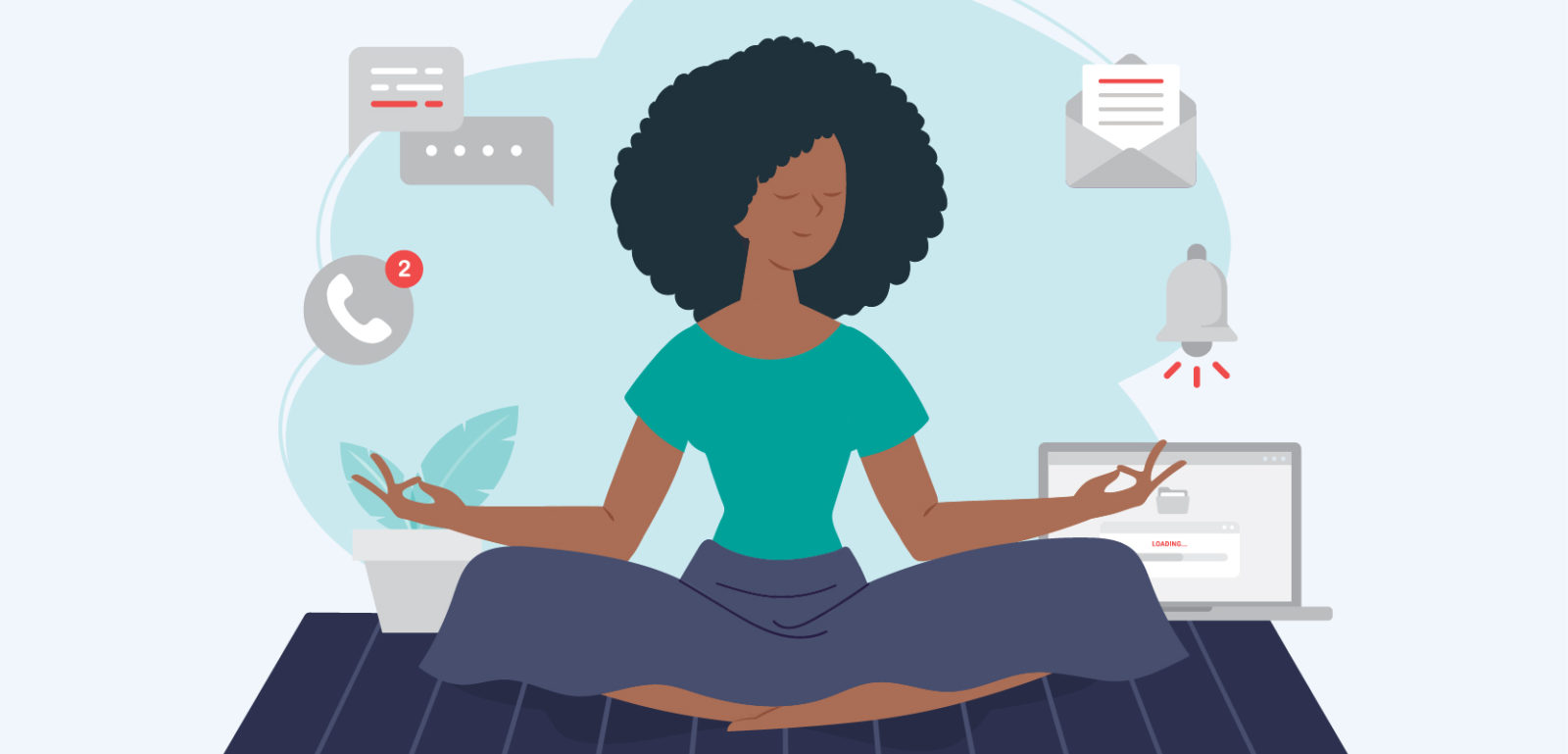
April is National Stress Awareness Month—time for raising awareness about the causes and cures for the growing stress epidemic within the United States.
The unpredictable experiences of the past two years have left many feeling depleted and at risk for the negative impacts of chronic stress. What begins as physical symptoms of stress such as chest pain, high blood pressure, and stomach problems can further manifest into anxiety, panic attacks, and depression.
Although stress can’t be avoided altogether, it’s essential to take proactive steps to create small moments of mindfulness, relaxation, and centeredness throughout the workday. Below are five go-strategies for shaking off the tension, including some favored by our teammates here at Healthcare IT Leaders.
Keep a gratitude journal
At the start of the COVID-19 pandemic, two researchers from Microsoft set out to study the connection between gratitude and well-being. Over a few months, 400+ employees were tasked with completing a daily gratitude journal. Participants responded to questions about the highs and lows of their workday.
Nearly half of the final survey respondents said the reflections positively impacted their well-being. Even reflecting on their challenges helped them see stressors they could address, showing that transcribing thoughts on pen and paper can help you feel in control and increase overall satisfaction.
All you need is a journal for this mindful writing routine. Here are a few prompts to get started:
- What are you grateful for today?
- What was your favorite highlight of the day?
- What challenges did you overcome?
- What events or activities do you look forward to tomorrow?
- What have you learned today that supports your professional or personal development?
Like exercise, journal regularly to enjoy the max benefits.
Get to know a coworker
Healthcare IT Leaders CMO Alex Gramling has worked from home (in Maine!) since the start of the company, but makes it a habit to reach out regularly to new employees to learn about their backgrounds. “I love my WFH schedule, but it can be isolating. I block time every month to video chat with as many new employees as I can. It’s energizing to learn about their families and lives, and I enjoy discovering something unique about everyone.”
Research shows that forming connections with your coworkers can go a long way in combatting the effects of isolation which includes increased stress. Book 10 minutes on the calendar of someone you’ve never met, and try out a few of these icebreakers from Glassdoor to kickstart get-to-know-you conversations:
- Where’s your favorite place to travel?
- How did you get into this industry?
- Have you ever met a celebrity?
- Do you have any family traditions?
- What’s your favorite task at work?
- Do you have any secret skills or talents?
- Who is your favorite music artist?
- Do you have any pets? (And can we see pictures?!)
Make time for laughter
When tension is high, Healthcare IT Leaders contact tracer and team lead Liliana Piantini relies on a good old-fashioned giggle. “When you laugh—even when something goes wrong—you relieve tension and brighten your mood,” says Piantini.
You finally have a medically-approved excuse to fit in a few cat videos throughout your workday or share your best “dad jokes” at the next team check-in. Need some ideas? Here are 101 short jokes that are sure to get some chuckles.
Give desk yoga a go
Stretching isn’t just for gym time–it also benefits your mental health. Take a few minutes throughout the workday to increase your serotonin levels (the hormones that stabilize our mood and reduce stress) by bending and extending your head, shoulder, knees, and toes.
With desk yoga, you won’t need to leave the house or office to get in some mood-boosting movement. Try out these yoga poses from instructor Emily Harding, which can be done next to or sitting on your desk chair.
Slow down with intentional breathing
During high stress, the body involuntarily goes into “fight or flight” mode. While this quick adrenaline spike may have been helpful when running from saber-tooth tigers in the caveman days, it can be counterproductive when facing anxiety toward an upcoming project deadline or presentation. Deep breathing techniques can be used to trigger the body’s relaxation response.
WebMD shares a few techniques to transform your shallow inhales into deep “belly” breaths that help calm the body’s physical reaction to stress. The simplest exercise is only six quick steps:
- Get comfortable, either lying down or sitting in a chair.
- Breath in through your nose. Let your belly fill with air.
- Breathe out through your nose.
- Place on hand on your belly. Place the other hand on your chest.
- As you breathe in, feel your belly rise. As you breathe out, feel your belly lower. The hand on your belly should move more than the one on your chest.
- Take three more full, deep breaths. Breathe fully into your belly as it rises and falls with your breath.
Tracie Melendez, a Healthcare IT Leaders COVID-19 tester, adds a little extra with a five-minute meditation. If you’re inclined, consider a calming mantra or OM chant for a similar relaxation response.














